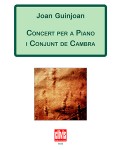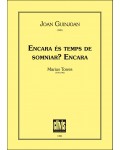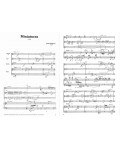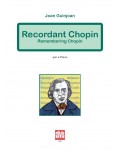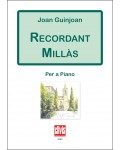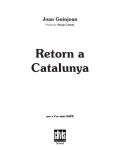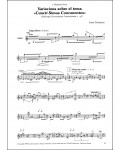
No products
Prices are tax included
Product successfully added to your shopping cart
There are 0 items in your cart. There is 1 item in your cart.
- English
- Castellano
- Català
Joan Guinjoan Gispert was born in Riudoms (Baix Camp, Tarragona, Spain) on 28 November 1931. He studied at the Conservatori Superior de Música del Liceu de Barcelona» and later at the «École Normale de Musique» in Paris.
Until 1960 he was a concert pianist. After this, he studied composition and orchestration with maestro Taltabull in Barcelona, at the Paris «Schola Cantorum» under the direction of Pierre Wissmer and in the electroacoustic O.R.T.F. with Jean Etienne Marie.
In 1964, he made contact with the French musical vanguard and turned to full-time composition. From 1966 onwards, he played an important part in spreading the popularity of twentieth-century music at the head of the group «Diabolus in Musica». He has been guest composer and conductor at leading festivals in both Europe and America and has received a number of important awards. He has been Director of the «Centre de Documentació i Difusió de la Música Contemporània» (Centre for the Documentation and Dissemination of Contemporary Music) and artistic director of Barcelona Council's International Festivals of Contemporary Music.
His clearly vitalist music aims for cultural synthesis and is notable for its symbiosis of languages co-ordinated by a personal style whose rhythm, and more especially timbre, evidence its Mediterranean roots.
His opera Gaudí, based on a text by Josep M. Carandell, was commissioned for the 1992 Barcelona Cultural Olympiad.
His extensive catalogue is published by SGAE and includes chamber, vocal and symphonic compositions, which have been interpreted chiefly in Europe and America, and which have been recorded on numerous occasions.
-
Concert per a piano i conjunt de cambra
Edition: DigitalThe Concerto for piano and chamber ensemble was composed in 1963 and was awarded the Schola Cantorum of Paris’ Composition Prize. It is a rather ‘raw’ piece. The piano part is most impressive but the thing that connects this concerto to the rest of the pieces of Guinjoan, is its rhythm.
12,10 € -
-
Encara és temps de somniar? Encara
Edition: PrintedThe work requires different vocal techniques from the performers, such as recitations or murmurs, but according to the author: “It exactly follows the structure of poetry, although musically it is freer.
6,40 € -
Encara és temps de somniar? Encara
Edition: DigitalThe work requires different vocal techniques from the performers, such as recitations or murmurs, but according to the author: “It exactly follows the structure of poetry, although musically it is freer.Copies license.
4,46 € -
Miniaturas (1966)
Edition: DigitalAs its title indicates, Miniaturas is built upon the foundations of small thematic cells. The first piece is characterized by the counterpointing of contrasts, and is followed by one which progresses from a bleakness of atmosphere to attain a marked lyricism. The third and final piece makes allusion to a progressively complex rhythm which ends with the...
13,38 € -
-
-
Recordant Millàs
Edition: PrintedRemembering Millàs, this short piece contains the melodic potential of the chosen medieval song in the form of variations, using a discreet modal language with brief dissonances that do not affect the consistency of the musical approach.
11,50 € -
Recordant Millàs
Edition: DigitalRemembering Millàs, this short piece contains the melodic potential of the chosen medieval song in the form of variations, using a discreet modal language with brief dissonances that do not affect the consistency of the musical approach.
8,02 € -
-
-


